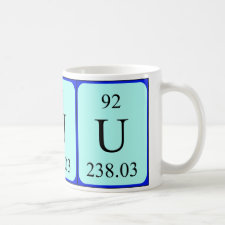
Authors: Kimaro A, Kelly LA, Murray GM
Article Title: Synthesis and characterization of molecularly imprinted uranyl ion exchange resins.
Publication date: 2005
Journal: Separation Science and Technology
Volume: 40
Issue: (10)
Page numbers: 2035-2052.
DOI: 10.1081/SS-200068451
Alternative URL: http://www.informaworld.com/10.1081/SS-200068451
Abstract: Ion exchange resins with enhanced capacity and selectivity for UO22+ have been prepared using the molecular imprinting method. The imprinted structure was introduced by copolymerization of styrene with uranyl vinylbenzoate in the presence of divinylbenzene as the cross-finking agent. The polymerization was carried out in bulk with free-radical initiation using 2-methoxyethanol as a solvent and porogen. Upon removal of the template, specific sites for UO22+ rebinding remained. In equilibrium binding experiments with a variety of metal ions, the polymers preferentially UO22+. bound 2 Control experiments were performed with reference polymers prepared without the template (unimprinted) and Ni2+ imprinted polymers. Selectivity data show that the imprinted polymers have a higher affinity for UO22+ than any of 2 the competing metal ions tested. Several variables, that are crucial in improving the capacity and selectivity of imprinted polymers, were investigated in detail. The variables included (1) the effects of template monomer content, (2) the degree of covalent cross-linking, and (3) the particle size. The effects of the variables on capacity and selectivity were examined and are discussed
Template and target information: uranium, uranyl ion, UO22+
Author keywords: molecularly imprinted polymer, ion exchange, uranyl



Join the Society for Molecular Imprinting

New items RSS feed
Sign-up for e-mail updates:
Choose between receiving an occasional newsletter or more frequent e-mail alerts.
Click here to go to the sign-up page.
Is your name elemental or peptidic? Enter your name and find out by clicking either of the buttons below!
Other products you may like:
 MIPdatabase
MIPdatabase









